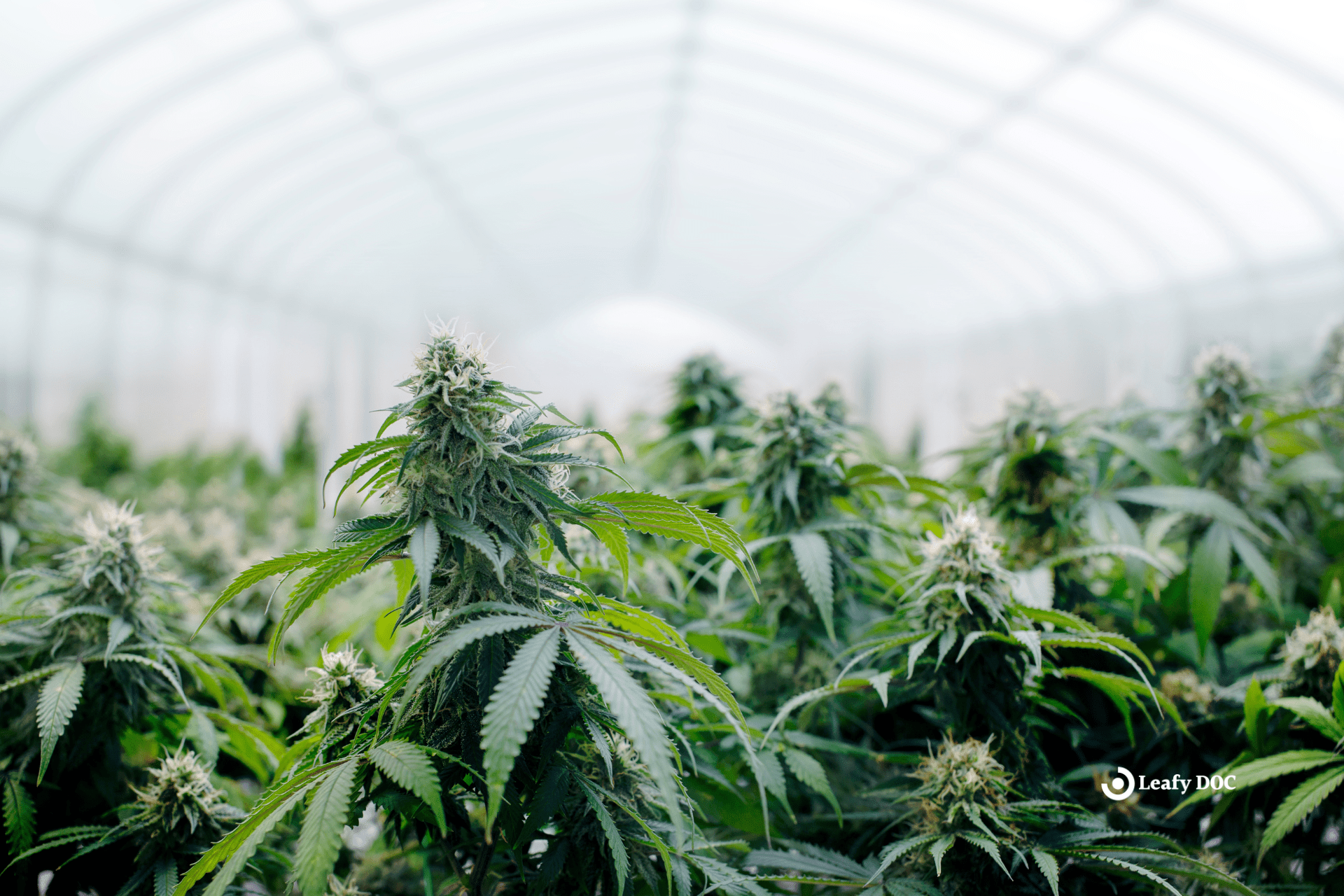The Future of Medical Marijuana: Emerging Trends and Innovations
by Haley Mills · July 6, 2023
Get a glimpse into the future of medical marijuana with our guide to emerging trends and innovations. Learn about new uses for cannabis and potential breakthroughs in treatment.

In the ever-evolving landscape of the medical cannabis industry, we find ourselves on the precipice of a new era marked by groundbreaking trends and innovations. Legal marijuana markets must grapple with complex challenges, including economic fluctuations, regulatory conundrums, and rapidly changing consumer behavior as we move forward. This article dives deeper into these critical issues, shedding light on the future of medicinal weed and its likely path.
Navigating Recession and Overproduction: The Cannabis Industry’s Struggle
The cannabis industry has faced many hurdles recently, including a challenging economic climate and overproduction. Fueled by broader macroeconomic headwinds, the recession has hit the industry hard. Even mature markets like Colorado and Washington State have fallen prices due to oversupply.
Overproduction has become a significant industry-specific obstacle. With the industry’s growth, production capacities have expanded, often outpacing demand. This oversaturation has led to falling prices and reduced profit margins, risking the survival of less efficient businesses. Companies are now forced to adopt more stringent cost-cutting measures, including reducing the workforce and optimizing operational efficiencies.
This struggle presents a learning curve for the industry, illuminating the need for better market forecasting, production management, and strategies to enhance product differentiation and value.
The Slowing Pace of Mergers and Acquisitions in the Marijuana Sector
In the early stages of the cannabis industry’s development, mergers and acquisitions (M&As) were a common strategy for rapid growth and expansion. However, recent years have seen a significant slowdown in this trend.
The major cause for this slowdown has been limited access to capital. With the industry still being federally illegal in the U.S., traditional funding avenues are often closed, leading to a drought in the capital necessary for M&As. As a result, many deals have dropped in value, with transactions that were once valued above $100 million now being few and far between.
This downturn in M&A activity signifies a maturing industry where organic growth and strategic partnerships may become more prevalent than large-scale acquisitions.
Delta-8 THC: A Wild Card in the Cannabis Industry
Delta-8 THC has emerged as an intriguing and somewhat disruptive player in the cannabis market. Like its more famous cousin Delta-9 THC, this compound has psychoactive properties but is typically described as providing a milder, clearer high with reduced anxiety potential.
Due to a loophole in the 2018 Farm Bill, which legalized hemp and all hemp “derivatives” and “extracts,” Delta-8 THC, which can be synthesized from legal CBD, has proliferated nearly unregulated. This has resulted in unexpected competition for the licensed cannabis industry.
The rise of Delta-8 THC underscores the need for more comprehensive, clear-cut regulations that cover all cannabinoids, ensuring safety for consumers and fair competition within the industry. As it stands, Delta-8 THC remains a wild card, its impact, and role in the cannabis industry yet to be fully determined.
From THC-centric to a Balanced Approach: Addressing the Potency Issue
The cannabis industry has been historically dominated by a THC-centric approach, with potency often serving as the primary measure of product quality. However, there is a growing recognition that this focus on THC levels overlooks the complexity of the cannabis plant and the synergistic interplay of its numerous compounds, often referred to as the “entourage effect.”
Cannabinoids like CBD, CBG, and CBN, along with terpenes, contribute to the overall therapeutic benefits and experience of cannabis. Some laboratories have been accused of misrepresenting THC content, leading to calls for stricter testing standards and oversight.
With the growing understanding of cannabis’s complex chemistry, cannabis trends show a shift towards a more balanced approach. Consumers are becoming more educated about other beneficial components of the cannabis plant, and producers are responding with more diversified products. This evolution could lead to an industry that values the holistic composition of cannabis rather than focusing solely on THC potency.
The Rising Call for Moratoriums Amid Market Oversaturation
Oversaturation of the cannabis market has led to a steep price decline, adversely affecting many businesses, especially smaller producers. As a result, there have been increasing business calls for state governments to impose moratoriums on new licenses.
These moratorium calls highlight the complex balance regulators must strike between encouraging industry growth and preventing market oversaturation. While limiting new licenses could potentially help stabilize the market in the short term, it could also stifle innovation and competition. The effects of such interventions are still uncertain, making this a critical issue to watch in the industry’s future.
The Future of Retail Cannabis: Consumer Evolution and Product Diversification
As cannabis companies mature, so too do their consumers. The retail cannabis landscape is evolving from a generic, one-size-fits-all model to a more sophisticated, segmented market that caters to various consumer preferences and needs.
Today’s cannabis consumers are not just buying more; they’re also buying differently. Flower sales continue to grow, but other products like vapes, concentrates, and edibles are gaining market share. This shift suggests that frequent users are not replacing flower but diversifying their consumption habits.
Newer forms of cannabis, such as live resin, have also gained popularity due to their perceived quality and potency. In response, retailers are stocking various product forms and potencies, and branding is becoming more nuanced and targeted.
This trend toward consumer sophistication and product diversification is shaping the future of retail cannabis, driving innovation and differentiation in a crowded market.
The Fight Against Illicit Cannabis in New York Post-Legalization
Legalizing recreational cannabis in New York has presented a unique challenge: reining in a deeply entrenched illicit market. The illicit market has thrived due to its convenience, competitive pricing, and lack of legal alternatives. Post-legalization, regulators face the task of converting these consumers to the legal market.
Addressing this issue requires a multifaceted approach, especially since federal legalization is still on the back burner and weed is included in the Controlled Substances Act. Firstly, licensed businesses must be competitive with illicit sellers, which may involve adjusting taxes and prices. Business conditions should be favorable enough to encourage the transition from the illicit to the legal market. Secondly, regulators must enforce strict penalties for unlicensed sales, making the illicit market less appealing.
However, the battle isn’t solely regulatory. Public awareness about the advantages of the legal adult-use cannabis market, such as product testing and safety, is crucial. These efforts combined could help New York transition from a thriving illicit market to a robust, safe, and regulated legal industry.
Emerging from the Financial Abyss: Canada’s Cannabis Industry
Canada’s cannabis industry has faced significant financial challenges in recent years. Large companies have been selling cannabis at a loss, leading to a financial abyss that has seen billions of dollars lost. The oversupply of cannabis and Wall Street’s easy money running dry have added to the industry’s woes.
However, signs of a shift are beginning to emerge. Inventory levels may peak and start to decline, and closures of underperforming stores may give way to a more sustainable retail landscape. With Wall Street financing less accessible, large companies may be forced to streamline their operations and focus on profitable growth.
The path to financial stability for Canada’s cannabis industry will require strategic planning, market-driven production adjustments, and more responsible financial management. Although the journey out of the financial abyss may be challenging, it is crucial for the future sustainability of the Canadian cannabis industry.
Unionization in Cannabis: An Ongoing Battle
The growing unionization trend in the cannabis industry represents a significant shift in worker-employer dynamics. Labor organizations view the cannabis industry as a prime target for their efforts, given its rapid growth and the number of workers it employs.
A range of worker concerns, including low wages and health and safety issues, has driven unionization efforts, especially in the realm of cannabis cultivation. However, not all cannabis companies have welcomed these efforts, leading to a contentious battle between workers and businesses.
In some cases, unionization has improved working conditions and better compensation. Yet, it also poses challenges for businesses, especially smaller ones, who may struggle to meet increased labor costs. As the cannabis industry grows, the ongoing unionization battle will shape its labor landscape.
Mixed Successes: The Continued Push for Cannabis Legalization
The journey toward cannabis legalization in the United States has been a tale of mixed successes. While there have been significant victories in states like Maryland and Missouri, other states in the South and West have remained steadfast in their opposition. Federal legislation, too, has seen incremental progress but not the sweeping changes many advocates hoped for.
However, the push for legalization is far from over. With the potential reevaluation of marijuana’s Schedule 1 status and the continued advocacy of reformers, momentum is building. States that failed to legalize cannabis in previous years, including Delaware, Kansas, and North and South Carolina, could swing the balance further toward legalization. Regardless of the mixed outcomes thus far, the push for cannabis legalization continues to reshape the legal and social landscape of the nation.
Surviving the Cannabis Industry: Key Players and Strategies
Surviving in the turbulent cannabis industry requires a combination of resilience, adaptation, and strategic foresight. The key players that manage to thrive do so by navigating market challenges and leveraging their unique strengths.
Some businesses have responded to market oversaturation and falling prices by focusing on cost efficiency, trimming down their operations, and adapting their business models. Others have sought to differentiate themselves through innovation and product diversification, responding to the evolving tastes of increasingly sophisticated consumers.
Another crucial survival strategy is consolidation, with larger, corporate-style businesses absorbing smaller ones. As the industry matures, we can expect to see further consolidation as companies strive to secure their place in the competitive cannabis landscape.
The Impact of Technological Advancements on the Cannabis Industry
Technological advancements have significantly impacted the cannabis industry. From cultivation to consumption, technology shapes how cannabis is grown, processed, distributed, and used.
In cultivation, advancements in lighting, automation, and climate control technologies have made it possible to produce high-quality cannabis more efficiently and sustainably. In processing, technologies like CO2 and ethanol extraction have improved the safety and purity of cannabis products.
Technology is also transforming the consumer experience. Sophisticated vape devices, accurate dosing tools, and online ordering and delivery platforms provide consumers with more control, convenience, and choice.
Furthermore, data analytics and artificial intelligence provide businesses with valuable insights into consumer behavior, enabling them to make more informed decisions and better meet consumer needs.
As the industry evolves, technological advancements will undoubtedly play a critical role in shaping its future.
Navigating the Path: The Future of Medicinal Marijuana
The future of the medical cannabis business is intertwined with challenges and opportunities. In the face of economic and regulatory hurdles, the legal cannabis industry continues to evolve, driven by innovation, growing societal acceptance, and relentless efforts toward legalization. Understanding these emerging trends and innovations is crucial for anyone looking to thrive in the dynamic world of medical marijuana. Despite the complexities, the path forward holds promise, signaling a vibrant and transformative future for the industry.
Last Updated: August 8, 2024
Get Approved for Your Medical Marijuana Card in Minutes!

Get Your Medical Card
Connect with a licensed physician online in minutes

Like This Article?
Share with your friends
Table of Contents
Keep Reading
-
The Benefits of Medical Marijuana in PA: What You Need to Know
Find out how medical marijuana can help improve your health in PA. Learn about the different benefits and how to get started.
-
5 Steps to Connect with a Medical Marijuanas Doctor Online PA
Connect with a medical marijuanas doctor online PA for compassionate, tailored cannabis consultations.
-
Unveiling The Respiratory Effects Of Medical Marijuana Use
Uncover the truth about the respiratory effects of medical marijuana use. Explore the surprising impact on respiratory health and gain valuable insights today! Click here to learn more.



